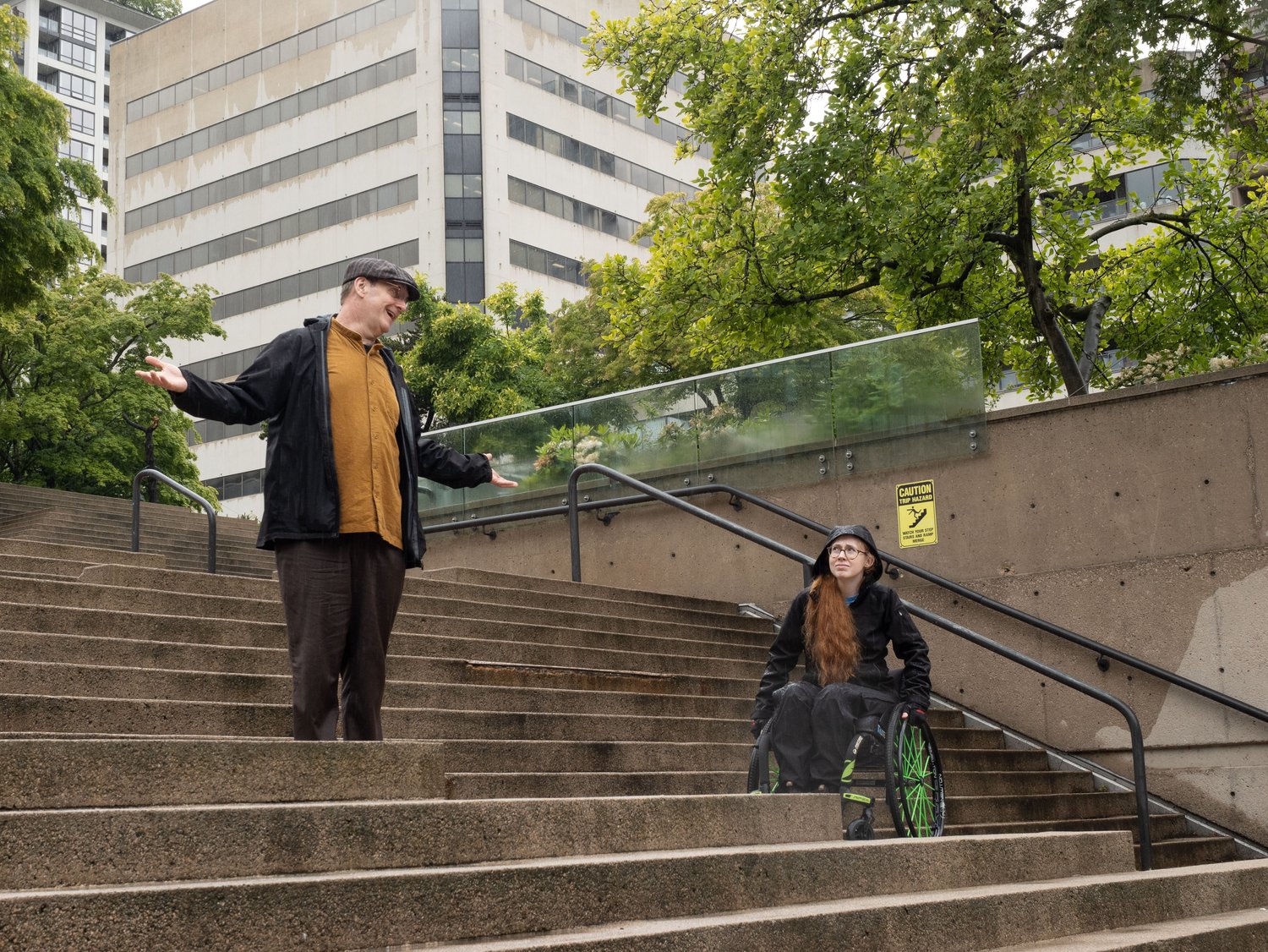When Adam Grant Warren moved from Newfoundland to Vancouver in 2008, one of the reasons was to attend film school, but that was only part of the reason. A wheelchair user and co-artistic director of Real Wheels Theatre, Warren left the eastern city of Mount Pearl for Vancouver’s reputation as “Canada’s most accessible city.” In fact, as Warren can attest firsthand, Vancouver still has a long way to go when it comes to meeting the needs of people with disabilities.
“Newfoundland is not geographically tolerant or accommodating for people in wheelchairs, so I had an optimistic outlook for the first few months I was here,” Warren told Stir in a phone interview, “but I often find myself running late or delayed because things break, things don’t work the way I want them to, things aren’t taken into account. Vancouver is more accessible than a lot of other places, but there’s still a lot of work to be done.”
Warren’s experiences of urban life, all from members of the disability community, form the basis of the new radio drama podcast “Disability Tour Bus,” which will have its global premiere on July 24th. Written by Amy Amantea and Lena Cohen and directed by Cohen, it follows Shiloh (Cadence Rush Quibel), a young wheelchair user, as she spends her first day as a guide for “Funkoover Bus Tours,” encountering many inaccessible locations along the way. They work alongside a longtime employee named Hugh (Leonard Stanga), who loves to tell dad jokes. One of the characters is visually impaired, which brings his own challenges with mobility. As in real life, accessibility challenges are numerous in the show.
“I came here knowing that Newfoundland would give me the level of independence and self-sufficiency I wanted,” says Warren. “It’s a car-driven society. There is public transport in Newfoundland, but it’s not good and it’s not wheelchair accessible. It’s news that there are a few wheelchair accessible taxis in Newfoundland. But even just commuting with a power wheelchair user is fascinating to me. As a manual wheelchair user, there are places that power wheelchair users can’t reach.”
“If I invite a friend who uses a power wheelchair out for coffee, they’ll think, ‘I can fit through this door, but you can’t,’ because the width is different. Power wheelchairs are generally wider, so I can fit through a standard-width door, but many of my friends can’t. It’s really important to note that people don’t necessarily think about universal aisles for universal wheelchairs because there is no universal wheelchair user.”
Turnstiles at BC Transit stations pose another problem: Many of Warren’s friends can’t physically tap their cards to get through. Instead, they have to call an attendant and wait for one to come and help them. “No one thought to ask what we actually needed as we were looking,” Warren says. “No one thought of people who can’t physically tap.”
Accessibility issues are at the core of disability tour buses, but they are not the only issue.

